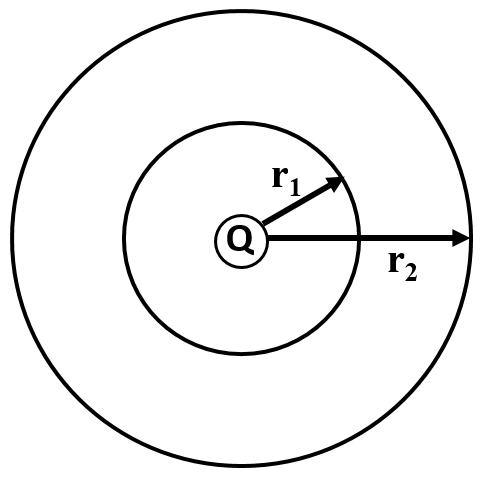Electricity
Practice Questions
AP Physics C Electricity & Magnetism › Electricity
A proton moves in a straight line for a distance of 

The charge of a proton is 
A proton moves in a straight line for a distance of 

The charge of a proton is 
A charge, 




Which is the correct relationship between the electric flux passing through the two spherical surfaces around the point charge?
A charge, 




Which is the correct relationship between the electric flux passing through the two spherical surfaces around the point charge?
You are standing on top of a very large positively charged metal plate with a surface charge of 
Assuming that the plate is infinitely large and your mass is 
You are standing on top of a very large positively charged metal plate with a surface charge of 
Assuming that the plate is infinitely large and your mass is 
Two point charges, 



The values of the charges are:
The distance is 4.0cm. The point 

What is the magnitude and direction of the net electric field at point 
Two capacitors are in parallel, with capacitance values of 

Two capacitors are in parallel, with capacitance values of 

Two point charges, 



The values of the charges are:
The distance is 4.0cm. The point 

What is the magnitude and direction of the net electric field at point 



